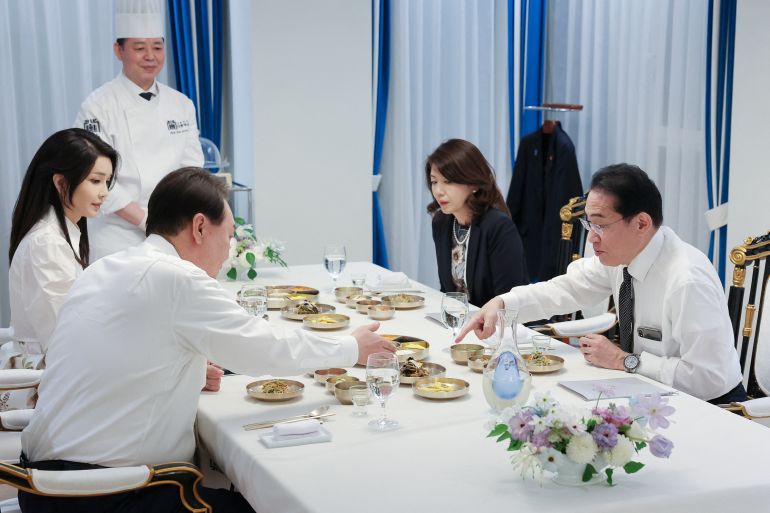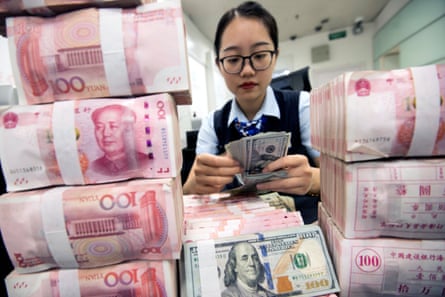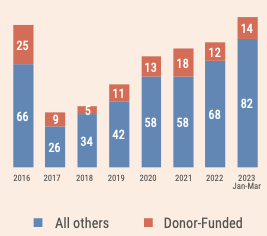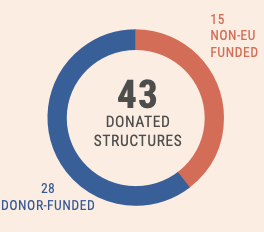
At SCO summit, India, Pakistan squabble over Kashmir, ‘terrorism’
As the fallout from a recent heated exchange between the foreign ministers of India and Pakistan continues to play out in the public sphere, analysts say both officials put up a “performance” for their respective domestic audiences.
During his visit to India for the Shanghai Cooperation Organisation (SCO) summit, Pakistan Foreign Minister Bilawal Bhutto Zardari urged member nations to avoid using “terrorism” as a diplomatic instrument.
“Terrorism continues to threaten global security,” the foreign minister said during his address at the SCO. “Let’s not get caught up in weaponising terrorism for diplomatic point scoring.”
He also criticised India’s decision to scrap the special status of the disputed region of Kashmir, saying New Delhi’s unilateral move in 2019 had undermined the environment for holding talks between the neighbours.
“The onus is on India to create a conducive environment for talks,” Bhutto Zardari said.
India’s Foreign Minister Subrahmanyam Jaishankar took strong exception to Bhutto Zardari’s statement, calling him the “spokesperson of a terrorism industry”.
“Victims of terrorism do not sit together with its perpetrators to discuss terrorism,” said Jaishankar at the SCO summit held in the Indian city of Goa, referring to deadly attacks on Indian soldiers in Indian-administered Kashmir. New Delhi has accused Pakistan of backing Kashmir rebels – a charge Islamabad has denied.
The Indian foreign minister also said that Kashmir’s special status was “history”, rejecting Pakistan’s demands to reverse the scrapping of the region’s special status.
In comments made during an interview with India Today news channel, Bhutto Zardari later said Islamabad was willing to engage and address any concerns India might have, but added New Delhi will also have to address Islamabad’s concerns.
Despite the multilateral nature of the summit, the broadside between Bhutto Zardari and his Indian counterpart Jaishankar shifted the focus from matters of regional security towards the standoff between the two South Asian neighbours.
The two countries did not hold any bilateral talks during the summit, which was also attended by China, Kazakhstan, Kyrgyzstan, Tajikistan, Uzbekistan, Russia and Uzbekistan.
Two days after the summit’s conclusion and Bhutto Zardari’s return to Pakistan, the Indian foreign minister continued to engage in indirect criticism by saying “he [Bhutto Zardari] spoke about everything, including India’s role in Kashmir, the G20, India’s foreign policies except the finer details of the meeting he was invited for.”
Playing to the crowd
As the host nation for the summit, India’s Hindu nationalist government reluctantly invited Bhutto Zardari, who became the first Pakistan foreign minister to visit India in 12 years amid heightened tensions between the neighbours, who have fought two of their three wars over Kashmir.
Analysts say the indirect public exchange between the two officials has been “entirely on expected lines”.
“Both foreign ministers were more worried about the internal politics in their own countries than making any progress on issues concerning their foreign policies,” Sushant Singh, a senior fellow at India’s Centre for Policy Research, told Al Jazeera.
Prior to setting off for India, Bhutto Zardari said his country was committed to establishing peace in the region and urged the attendees to isolate terrorism from “geopolitical partisanship”.
According to Singh, Jaishankar’s comments are reflective of Prime Minister Narendra Modi’s endeavour to demonstrate that Pakistan doesn’t matter to India.
“Modi’s dominant narrative has been to portray India as an emerging great global power, and to portray Pakistan as being insignificant to India,” Singh said.

‘India’s petty behaviour will limit its potential’
Bhutto Zardari’s statement that Islamophobic wolf whistling won’t be an effective “terrorism” strategy has been welcomed by Pakistan’s media.
“It is important for Pakistani leaders to continue to highlight and underscore the wild levels of hatred that can form mainstream Indian public discourse and public policy,” Mosharraf Zaidi, of Pakistan-based public policy think-tank Tabadlab, told Al Jazeera from Islamabad.
Zaidi said India’s “petty behaviour” will limit its potential as a major world power, but that should not deter Pakistan from “resisting India’s hegemony”.
The brief meeting between the two ministers, as Bhutto Zardari walked up to Jaishankar and was greeted by his Indian counterpart with a Hindu greeting of “namaste” with clasped hands, has been subject to analysis on social media in both countries.
However, Zaidi said that while much attention should not be given to the nature of the physical engagement, as the greeting was “respectful”, the way in which Jaishankar talked about Pakistan should be scrutinised.
“India can afford to misbehave as it did at the conference because its powers and stakes far exceed the cost of this kind of behaviour,” he said.
India’s ‘two-fold’ problem
Singh, the Indian expert, noted that Jaishankar and India may have chosen to keep away from bilateral talks with Pakistan as they do not wish to “up the ante” with India’s western neighbour.
“India is under pressure due to its border crisis with China, and it would be very difficult for it to manage a two-front challenge by engaging with Pakistan,” he said.
A clash in the Ladakh border region between Indian and Chinese soldiers left 20 Indian soldiers and four Chinese dead three years ago. It turned into a long-running standoff in the rugged mountainous area, where each side has stationed tens of thousands of military personnel backed by artillery, tanks and fighter jets.
Last month, India’s defence minister accused China of eroding the “entire basis” of ties between the two countries by violating a bilateral agreement.
According to Zaidi, India’s conflict with China is political and territorial.
With Pakistan, however, the standoff has continued since both countries were separated in a bloody partition in 1947.
“India’s hatred for Pakistan is existential and cuts across all political parties, but is especially stark and profound when it comes to the Bharatiya Janata Party of which Jaishankar is a representative,” Zaidi said.
Despite the apparent lack of attention towards Pakistan, Singh predicted that India could “invoke Pakistan at any point”.
“Pakistan can always be brought out of the close by Modi as and when he wants, and it can be used as a proxy for Indian Muslims or invigorating Hindu nationalist tendencies in the country.”
SOURCE: AL JAZEERA
















